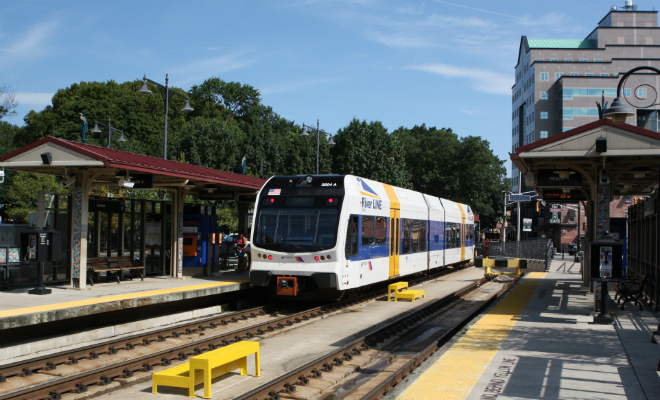New Jersey Future Blog
2004 Year in Review
December 20th, 2004 by Tim Evans
A look back at some of the facts that have and will continue to shape our work at New Jersey Future.
- New Jerseyans burn an astonishing 11 million gallons of gasoline every day, up from 10 million gallons of gas just one year ago. Sprawling land use is a primary culprit. The growing distance between daily destinations and resulting traffic congestion caused a 20 percent jump in average daily commute times in the Garden State in the last decade (1990-2000). (5/21/04)
- New Jersey would exhaust its remaining open land before 2025 if it were developed at the low-suburban densities found in places like Chester Twp. in Morris County, Montgomery Twp. in Somerset County, Freehold Twp. in Monmouth County or Monroe Twp. in Gloucester County. (3/31/04)
- The Garden State lost more than 120 farms and 51,227 acres of farmland in the five years ending in 2002, according to Census figures released last week, the highest rate of loss in the past 20 years. Farms that remain on average are also shrinking in size. (6/11/04)
- The Highlands counties of Warren, Hunterdon and Sussex claim three of the top five spots among the state’s fastest-growing counties of this decade. (4/30/04)
- A growing number of municipalities are permanently preserving open land at little or no public cost by steering the growth they want into more dense developments, and placing restrictive covenants that prohibit development on surrounding open lands. (7/30/04)
- The growing popularity of transit is helping fuel an increase in demand for housing near transit. Over the next 25 years, at least a quarter of all U.S. households (some 15 million) will want to rent or buy near transit, according to one national study. That’s double today’s number. (11/19/04)
- Homes within a half-mile of the MidTown Direct rail line to Manhattan more than doubled in value (up 113 percent) between 1993 and 2003, even accounting for inflation, according to a recent study. (6/30/04)
- Some 40 percent of all households in New Jersey are low- or moderate-income households, meaning they earn less than 80 percent of the median gross income for their region. (9/20/04)
- Although some half-million low- and moderate-income households across New Jersey need affordable housing, more than half (58 percent) of today’s affordable housing is disproportionately concentrated in only 20 municipalities. These same municipalities also are assigned to receive more than half of the newly calculated municipal obligation for affordable housing, under new COAH (Council on Affordable Housing) methodology. (10/8/04)
- Abandoned buildings and vacant properties can be huge disincentives to rebuilding cities and older communities. New Jersey feels the challenge keenly. Nearly one in five homes in Camden is vacant (19 percent), the highest percentage of any non-resort city in the nation. (1/29/04)
- Historic preservation pours more than half a billion dollars into the state’s economy each year, including $123 million in improving historic buildings, $432 million in heritage tourism spending, and $25 million in spending by historic sites and organizations. (10/22/04)
- Roughly one in four adults over age 65 does not drive in New Jersey, some 300,000 seniors. Reasons cited for not driving include declining health and eyesight, concern over safety, and no car or lack of access to a car. These non-driving New Jerseyans face increased isolation and reduced access to health care, according to a national study released this month. (4/20/04)
- One out of every five people killed in a traffic accident in New Jersey is a pedestrian. That is twice the national average. Yet a new national report shows New Jersey only spends one half of one percent of its federal transportation dollars protecting walkers and cyclists. That is half the national average. (12/03/04)
















